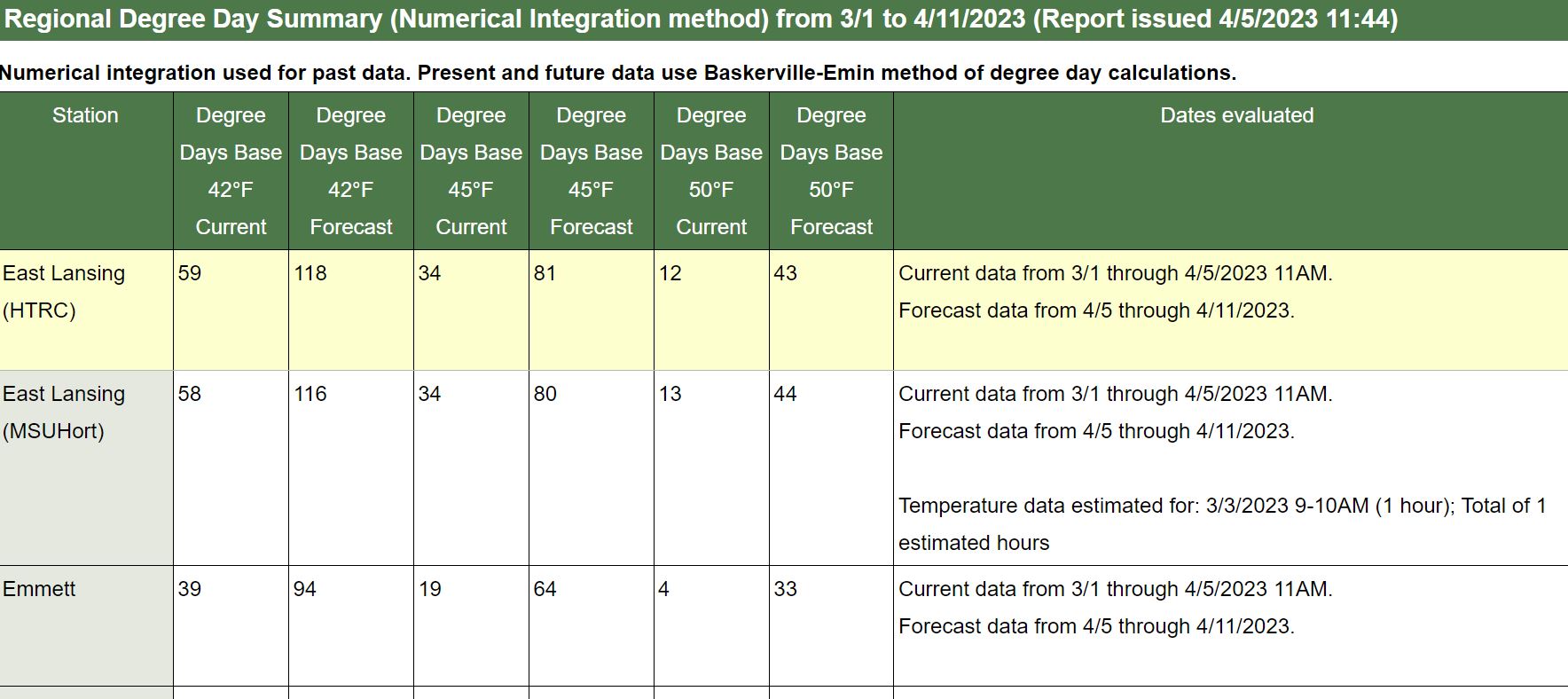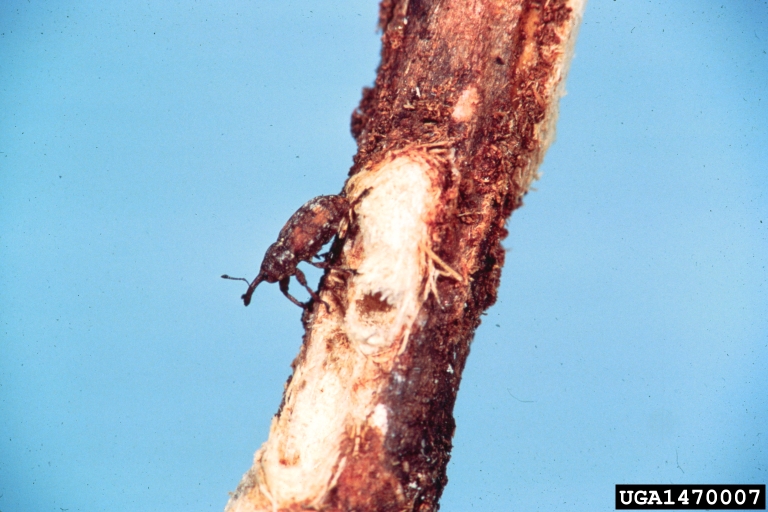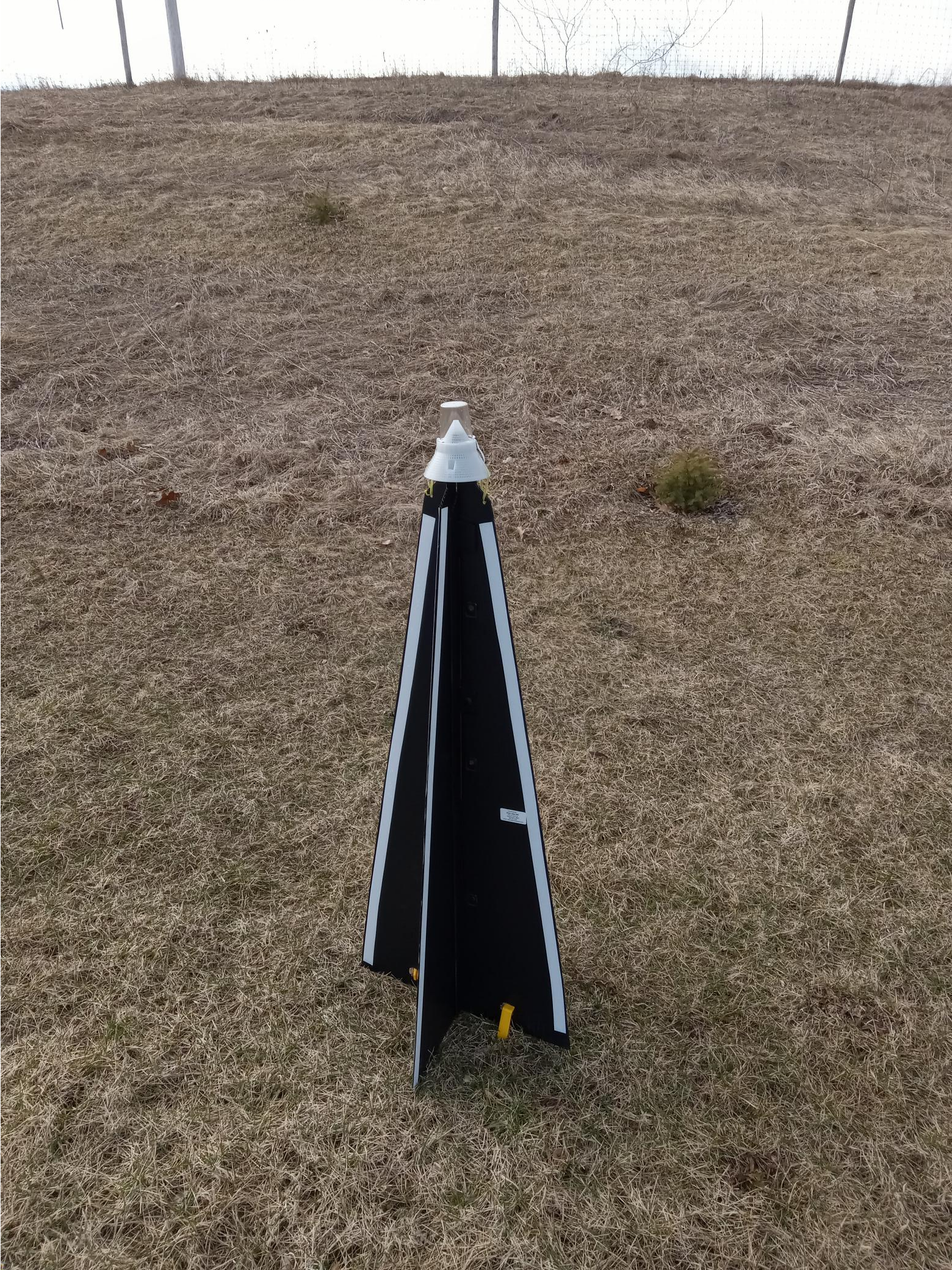Follow growing degree days to track early season Christmas tree pests
Finetune your scouting and treatment program by using growing degree days, insect growth models and MSU Enviroweather.

Depending on your location in Michigan, early season Christmas tree pests have emerged or will begin shortly (Photo 1). Insect development is not dependent on calendar dates, but by the amount of heat they experience. As a result, models have been developed that predict when specific insect growth stages occur based on how much heat has accumulated. Michigan State University Extension recommends using this information to determine when pests become active and to assist in determining the timing of appropriate treatments. Treatments after a specific developmental stage, such as egg laying, may no longer be effective for controlling the pest.
How is heat accumulation tracked?
Heat accumulation is expressed in growing degree days (GDD). GDDs can be calculated in several ways, but the simplest is by taking the average temperature [(high – low)/2] for a given day and then subtracting a standard value. The resulting numerical value is the accumulated growing degree days for a date. For Christmas tree insects, the majority models for pest development use a base of 50 (GDD50). As an example, a day with a high of 70 degrees Fahrenheit and a low of 50 F would have accumulated 10 growing degree days [(70-50)/2 -50base = 10 growing degree days).
Where do I find growing degree day information?
Growing degree day information is available through MSU Enviroweather. MSU Enviroweather is a collection of weather stations across the state that are collecting weather-related data. Once you have selected the nearest weather station, for example East Lansing, to your farm location, GDD values are shown and future values are predicted (Photo 2).

How can I incorporate growing degree day information into my Christmas tree pest management plan?
Use the “MSU Christmas Tree Pest Management Guide” or the “Christmas Tree Pest Manual” as resources to begin matching GDD accumulation to pest development. Both documents will provide detailed information on life cycles of specific pests and timing of treatments in relation to GDD accumulation.
As an example, white pine weevil (Photo 3) adults are expected to become active between 25 and 225 GDD50. Insecticide treatments need to occur prior to egg laying, and should be targeted between 25 to 65 GDD50. To further determine if this pest is active at your location, white pine traps and lures (Photo 4) are commercially available. Place traps near trees that are suspected of white pine weevil damage in the prior year. Once adults are captured, insecticide treatments window would be open.





 Print
Print Email
Email

